Eberron by Lemon Curdistan
it is the year 1923 – the height of the Cold War – and megacorporations rule the world…
Original SA post
Move the fuck over, Faerûn; here comes the
real
pro setting.

Sorry Kurieg, but I beat you to it. You can take over when I inevitably lose interest midway through

Eberron, introduction: it is the year 1923 – the height of the Cold War – and megacorporations rule the world
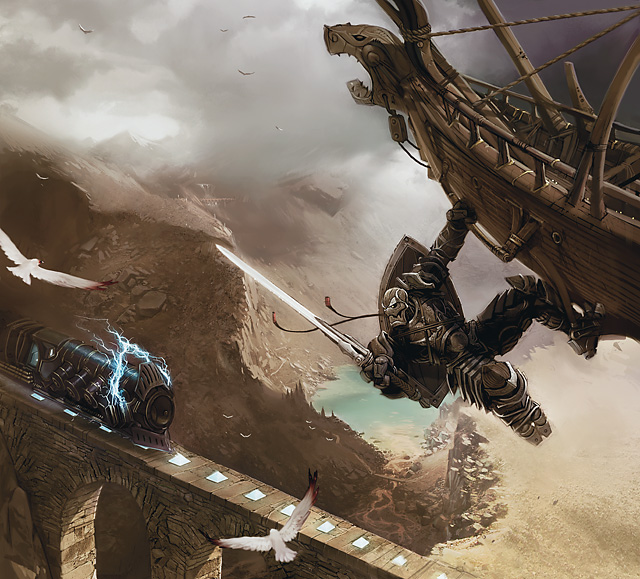
eberron.jpg
What is it?
Eberron is a D&D setting that combines elements of pulp, noir and high fantasy in what ends up being a fairly unique mix (for D&D, at least).
Here is a short list of activities one can engage in in Eberron:
quote:
THINGS YOU CAN DO IN EBERRON
- Indiana-Jones-style pulp adventuring with falling-rock-traps and angry tribes of cannibal drows;
- Old-Western-style train robbery complete with Artificer dual-wielding wands and fighting guards on top of the Lightning Rail carriage;
- noir-esque murder/disappearance mystery set in Sharn with rugged private eye and his warforged partner;
- Cold-War-type "who is the mole feeding crucial information to the enemy organisation?!" shenanigans;
- 1920s/80s dodgy corporate politics including murder, arson, industrial espionage and bribery;
- swashbuckling duels atop elemental-powered airships.
If that doesn’t mean much to you, imagine this:
The first war of the Industrial Age has just ended, and it was a long one – in one form or another, it lasted a little over 100 years. This war – the Last War, as it came to be known – happened between five brothers and sisters, the sons and daughters of King Jarot of Galifar (named after its founder, King Galifar, from whom Jarot was descended), who squabbled over his empire after his death. With powerful magitech (like airships powered by bound elementals and legions of construct soldiers), these Five Nations nearly destroyed each other – until a terrible magical catastrophe wiped out one of the five. Whether an accident or a weapon (no one knows), this event ended up providing the catalyst for a weary peace between the belligerents.
Out of the wreckage, the Five Nations have emerged weakened and indebted to the Dragonmarked Houses: powerful merchant dynasties with legally-enforced monopolies whose members occasionally manifest magical birthmarks that give them power over a specific economic domain (e.g. banking, or travel). These Houses have essentially become governments unto their own, with private armies and with the lands they own being subject to no law but their own.
But just because the War has officially ended doesn’t mean Galifar’s descendants have given up on their ambitions; all the contrary. A century of war has left each kingdom with extensive networks of spies and saboteurs who fight a shadow war with one another in an attempt to destabilise opposing régimes. In effect, the Last War has only publicly ended – it is very much like the Cold War, and while the common people are weary of all the fighting, there’s no shortage of “patriots” willing to light the powderkeg anew.
In other words, Eberron is set in the aftermath of World War I, where sapient
Oh, and there’s halflings who ride motherfucking dinosaurs, too.
How did it come to be?
Back in 2002 (oh, hey, that was over a decade ago now
 ), Wizards figured out that maybe relying on just Forgotten Realms as their flagship setting for D&D might be a bad idea. In an effort to resolve this problem, WotC started the Fantasy Setting Search contest (what an original name
), Wizards figured out that maybe relying on just Forgotten Realms as their flagship setting for D&D might be a bad idea. In an effort to resolve this problem, WotC started the Fantasy Setting Search contest (what an original name
 ).
).
The contest received about 11000 single-page setting pitches, from a mix of amateurs, industry folk and professionals from outside the tabletop industry. Out of all of those, Wizards ended up selecting a mere eleven pitches to be developed into 10-page outlines, then three finalists were asked to provided setting bibles.
After several months of judging, Keith Baker’s Eberron pitch won the contest. Since part of the submission guidelines involved agreeing not to disclose any info about the setting pitches, the othes have unfortunately been lost to the mists of time and WotC’s R&D vaults – although there are some reasons to believe a lot of the content ended up being reused in late-era 3.5 supplements and maybe even bits of 4E’s PoL setting.
You may notice that Eberron uses a lot of traditional D&D elements (elves, dwarves, beholders, alignments, dungeons) but tries to subvert a lot of them – one of the requirements for the contest was actually to produce a setting where all the traditional D&D elements had a place. As mentioned a few posts up, Eberron is also a setting where a lot of holes are left in the setting for the DM to fill.
Next time: less text, more pictures of maps
Also, as postscript, a note: my job on this is essentially cut out for me thanks to the absolutely terrific Grand History of Eberron , a 500-page document that collates all Eberron material in a single source. It's a fucking fantastic resource.
As this is intended to be more of an overview of Eberron and why it's so great, I won't be looking at every setting element in detail - if something I mention is of particular interest to you, the Grand History will doubtless literally have 20+ pages of details on it, so check it out.
the Five Nations of Galifar
Original SA post
Eberron, part 1: the Five Nations of Galifar
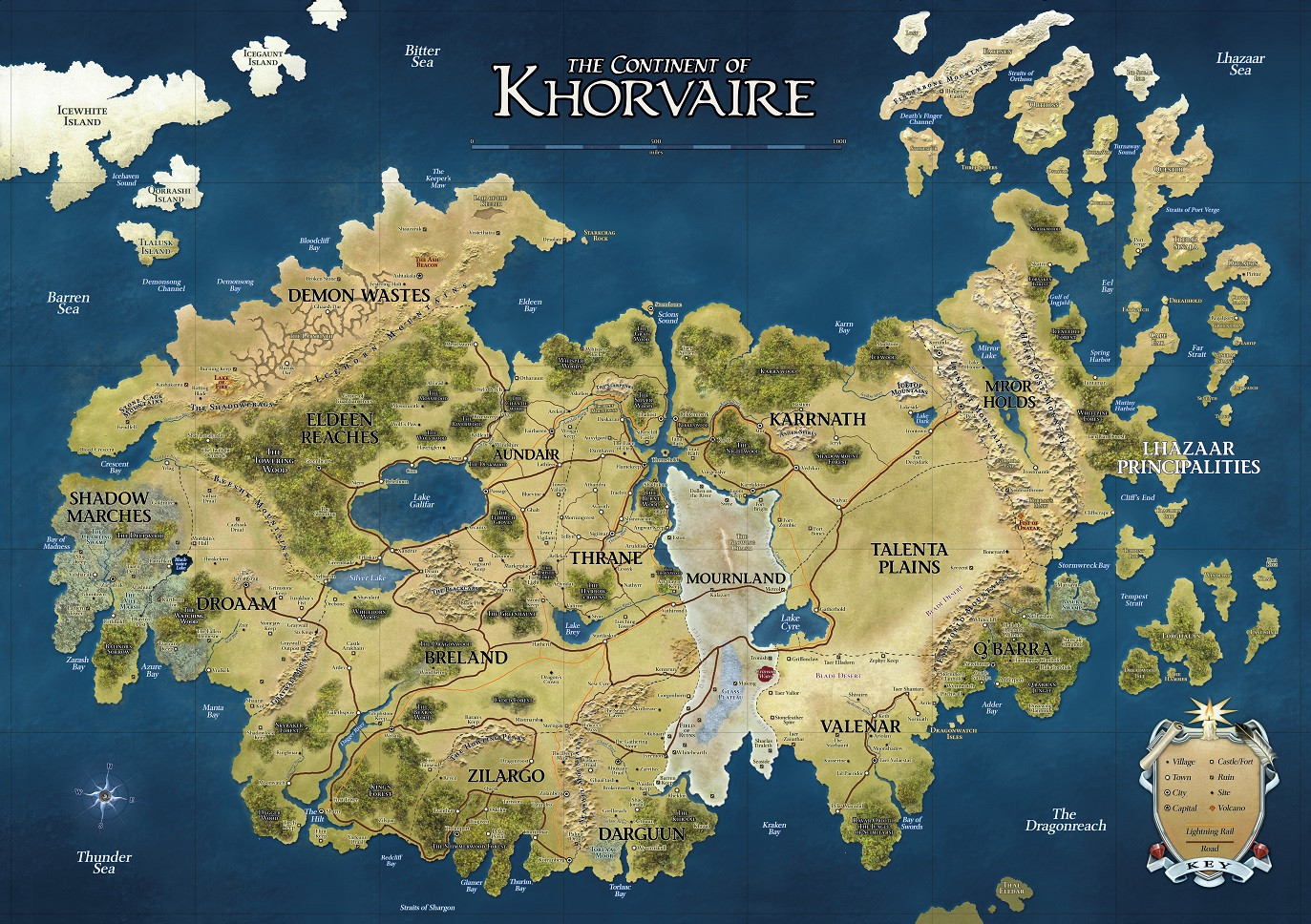
This is Khorvaire not the only continent in Eberron, but the one thats been most written about. Click here for HUGE (seriously, 5MB image). The red lines are major roads, and the glowy orange lines are the rail lines for the Lightning Rail - magical maglev trains.
Actually, I lied about there being less words.
Aundair
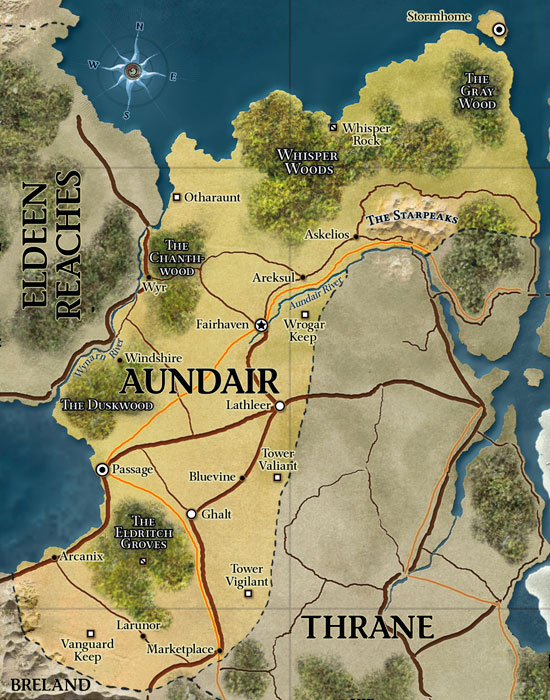
Absolutely not fantasy medieval France.
Okay, its basically fantasy medieval France.
Aundair is a nation of hard-working peasantfolk, nobles and powerful battle-mages. The bread-basket of Galifar, Aundair actually did okay in the War its biggest losses werent to the other kingdoms but to secessionists in the Eldeen Reaches splitting off from the crowns rule, which Aundair was powerless to stop in the middle of the War. Located on the borders of Karrnath and Thrane, the country still has a bone to pick with them today especially with Thrane, since the Treaty of Thronehold (the one that ended the Last War) gave away one of the contested border regions to the latter.
Despite the idyllic magical countryside flavour, Aundairs military is actually surprisingly mighty. Between its very-well-trained voluntary light infantry and dragoons and the phenomenal arcane power of its war-wizards, you dont want to tangle with the Aundairans especially because they are actually a centre of magical manufacturing and genetic engineering with a much higher distribution of magitech than the other kingdoms (think wands-are-guns, or flying castles and hypogriff-mounted troops).
Aundair is ruled by the beautiful and fair queen Aurala, granddaughter of Jarots fourth child, who is much beloved by her people. Unfortunately for everyone else, Aurala is actively trying to restart the Last War she believes that Aundair has what it takes to subjugate all the other kingdoms so she can sit on the throne of a reunified Galifar.
Breland
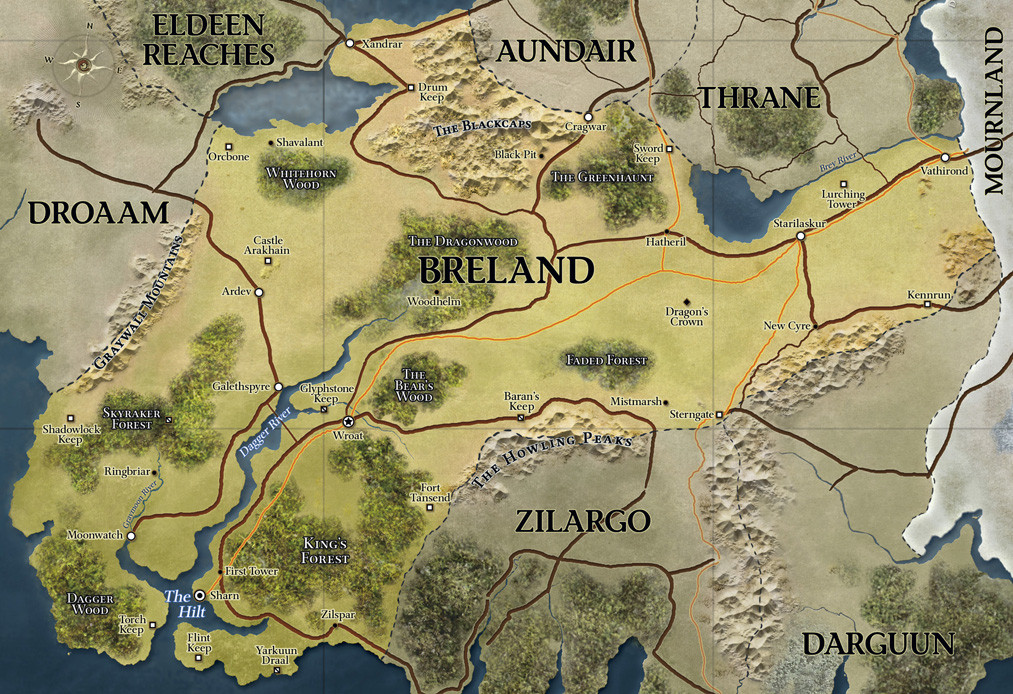
Plucky little Breland.
Breland is by far the largest of the Five Nations whereas the settlers who founded the other four regions of Galifar didnt spread very far, Brelands population had that frontier spirit that allowed them to push much further inland and spread out over a lot more land.
In fact, frontier spirit is what defines Breland. It was founded by what essentially amounted to adventurers, and its current king continues to encourage settlers, pioneers and murderhobos to set off into the wilderness. During the Last War, the fact that its huge and has so many natural resources means it probably did the best out of all of the Five Nations in fact, where Aundair had its magical might, Thrane its religious fanaticism and Karrnath its famed military tradition, everyone sort of expected Breland to roll over and die, but it turned out that its free-minded militias were actually pretty good in a fight.
Other than that, Breland is sort of bland. It doesnt really have much going for it as an actual nation, with a couple of exceptions
First of all and this is the big one its where Sharn is located. Sharn is basically fantasy New York City, and is pretty much the default urban location for games of Eberron its the most cosmopolitan place in the entire setting. I'll give its own section in the next post.
Secondly, Breland lost control of its western reaches to a budding nation of monsters who banded together to survive Droaam. As a result, Breland has a massive hate-on for them and will quite happily send parties over to reclaim the lost territory. As you can imagine heres lots of gold to go here and kill orcs, goblins, medusas and worse makes for a fairly popular adventuring hook.
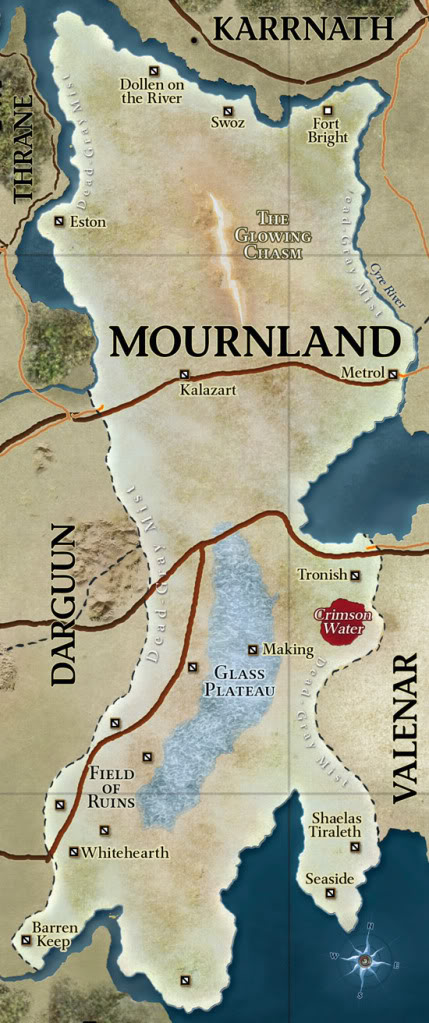
Whoops.
Were it not for Cyre, there is every indication that the Last War would have continued for a good few more decades probably until everyone starved and the Houses took over, given the stalemate that the latter years of the Last War proved to be.
Unfortunately, Cyre didnt heroically stop the war by brokering a tenuous peace agreement; what actually caused the tenuous peace agreement was Cyre being nuked into the fucking ground.
Prior to that happening, Cyre was actually the most technologically and culturally advanced part of Galifar, the very heart of the kingdom, and its ruler at the time of Jarots death was actually the first in line for the throne. Had Princess Mishanns brothers and sisters actually acknowledged her right to rule rather than making power-plays to satisfy their personal ambitions, the Last War would never have happened.
Because of this, Cyre ended up being the battleground where most of the Last War was fought. From the most beautiful part of Galifar, Cyre ended up being one big, war-torn battlefield, right up until the point where the entire country was blown up by a magical nuclear explosion on the Day of Mourning, as it became known.
Now, Cyre is known as the Mournland a vast expanse of wasteland where roiling storms of arcane energy blow across the land, grey fog mutates everything it touches and the very laws of physics seem to have decided to take a holiday. If youve read China Miéville, yes, its basically the Cacotopic Stain from Iron Council .
No one knows why Cyre blew up whether it was a freak accident, if the Cyrans were working on an arcane doomsday weapon to end the Last War or whether someone or something else blew them up and I mean it is official setting policy that theres no official answer to this, so that you can decide what the cause of the Mourning actually was. The tiny handful of remaining Cyrans (less than five thousand, out of the 1.5 million who lived in Cyre) now live in New Cyre, a region of Breland that the Brelish king has loaned to the refugees.
Other than the excitement of painful instant death, the main motives for going to Cyre are looting its ruins since they were the most technologically advanced. That, and the Mournland is where a small but steadily growing army of warforged who believe all flesh is weak and must be eradicated is located, which makes for a pretty good hook.
Karrnath
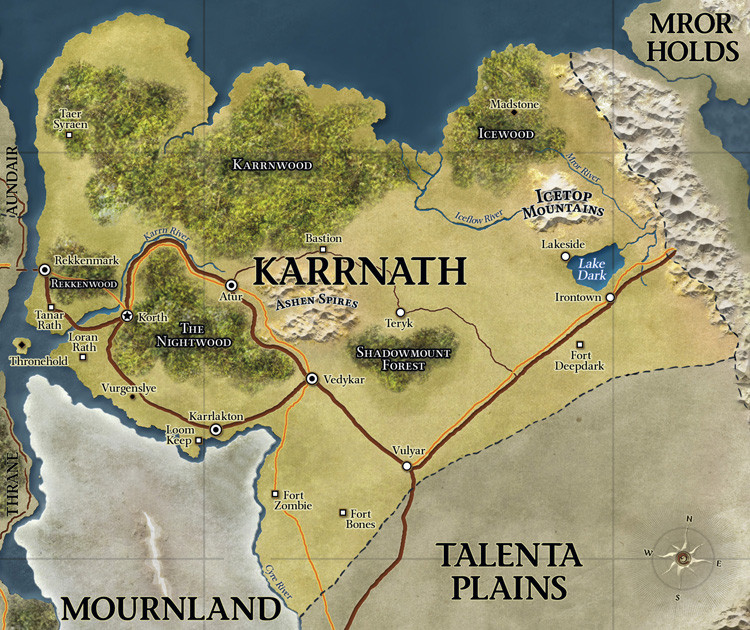
Its cold outside ♪ (but there's still some kind of atmosphere).
This charming military dictatorship is named for Karrn, a warlord of the far antiquity who was chiefly responsible for fighting the natives and allowing humanity a place to thrive on Khorvaire. If it hadnt been for Karrnath, Khorvaire would still mostly be ruled by hobgoblins (this will make more sense in a bit).
Located to the North-East of Khorvaire, Karrnath is a frigid land of dour people think Tsarist Russia and youre not far off. During the opening years of the War, Karrnaths forces took particularly severe losses this lead to Karrnath using the necromantic arts to raise their dead as zombies and skeletons.
Past the initial distaste, this proved to be a surprisingly good strategy for Karrnath. Undead dont tire or require sustenance, and if theyre knocked down you just raise them again, as long as the damage isnt too extensive. Nowadays, the Karrnathi have no problems with necromancy, and Karrnath still maintains its borders with undead troops.
Karrnath is ruled by King Kaius III, the grandson of Kaius I, who was the third of Jarots brats.
Except not! In a surprise twist, Kaius I is actually a vampire, and keeps faking his death every 50 years or so and handing the throne down to his son. In another surprise twist, Kaius is the only one of the five rulers who actually wants peace . The other four are all power-hungry dickbags, but Kaius just wants the Last War to go away forever and never come back.
NB : one of the things Eberron does is that it attempts to subvert certain elements of D&D, like alignments and gods. The thing with Kaius being a vampire who wants peace and Aurala being a Good character who wants war is part of that.
Thrane
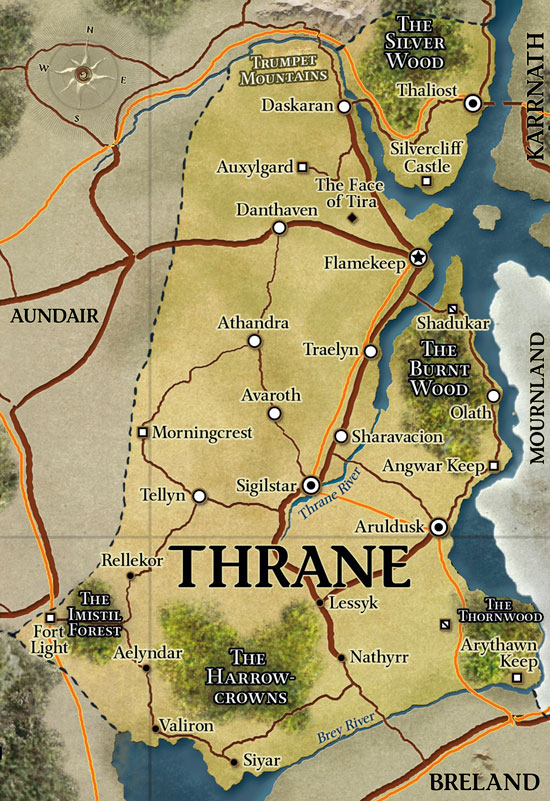
Come on baby, light my fire.
Thrane is a nation of religious fanatics.
You see, in Eberron, gods are actually distant they never communicate with their followers directly, and any contact a priest or cleric has is with some kind of divine servant, even when praying for miracles/spells. There is one exception to that: the Silver Flame.
The Silver Flame is a literal silver flame that exists in Thrane. The Church of the Silver Flame worships it, and it actually speaks directly to a mortal the Keeper of the Silver Flame, who is currently an 11 year old girl called Jaela Daran. The Flame and its Church have been around for about 700 years now the cult originated when a paladin sacrificed herself to close a portal between the material plane and the Nine Hells that was literally disgorging devils into Thrane.
Thrane wasnt always a theocracy, although its inhabitants were deeply religious from that point onwards. About 75 years before the end of the Last War, the Church of the Silver Flame actually assumed control of the country on the last kings death, painting the kings heir as weak and using the War as an excuse, and started simply ruling in their stead. During the War itself, Thranes big advantage was their access to powerful divine magic as you would expect from a theocratic nation that worships a physical manifestation of a divine being that actually personally hands out miracles to its followers.
The Church of the Silver Flame itself is a bit of a stereotypical D&D Paladin religion heavier on the kill the evil guys side of things than on peaceful worship and meditation. For this reason, theyve been known to occasionally go overboard they infamously declared a crusaded on were-creatures that was essentially outright genocide with a lot of collateral damage. More details on this in later posts, when I go over the races and faiths of Eberron.
As an aside, exactly what the Flame is (since Eberron's gods don't talk directly to their followers or make their wishes known) is one of those setting mysteries deliberately left for your DM to decide.
Next time: everywhere else.
everywhere else (on Khorvaire)!
Original SA post
Splitting part 2 into separate posts, since it's quite long.
Eberron, part 2A: everywhere else (on Khorvaire)!
Sharn
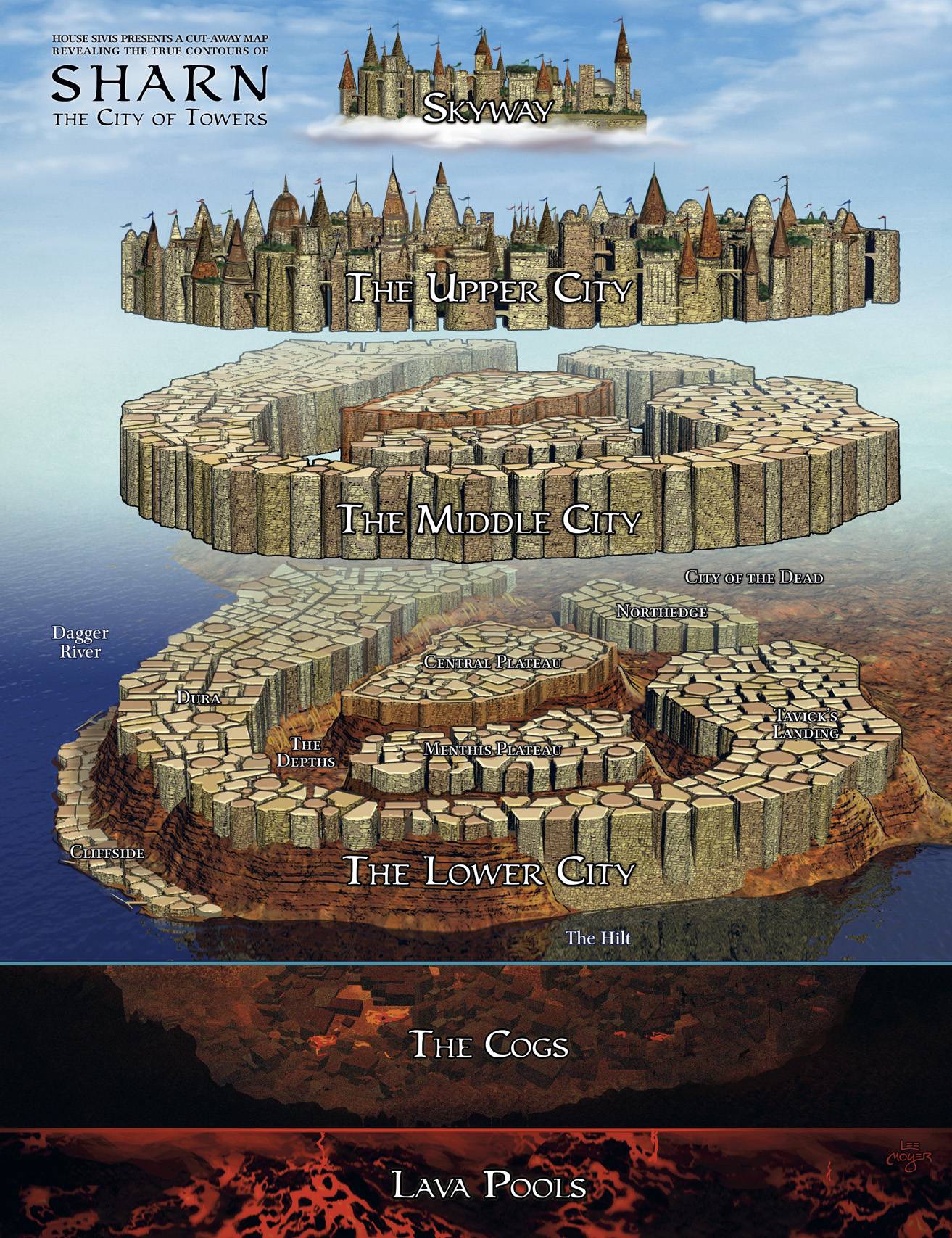
That’s the official map. Really, as described it looks more like this:
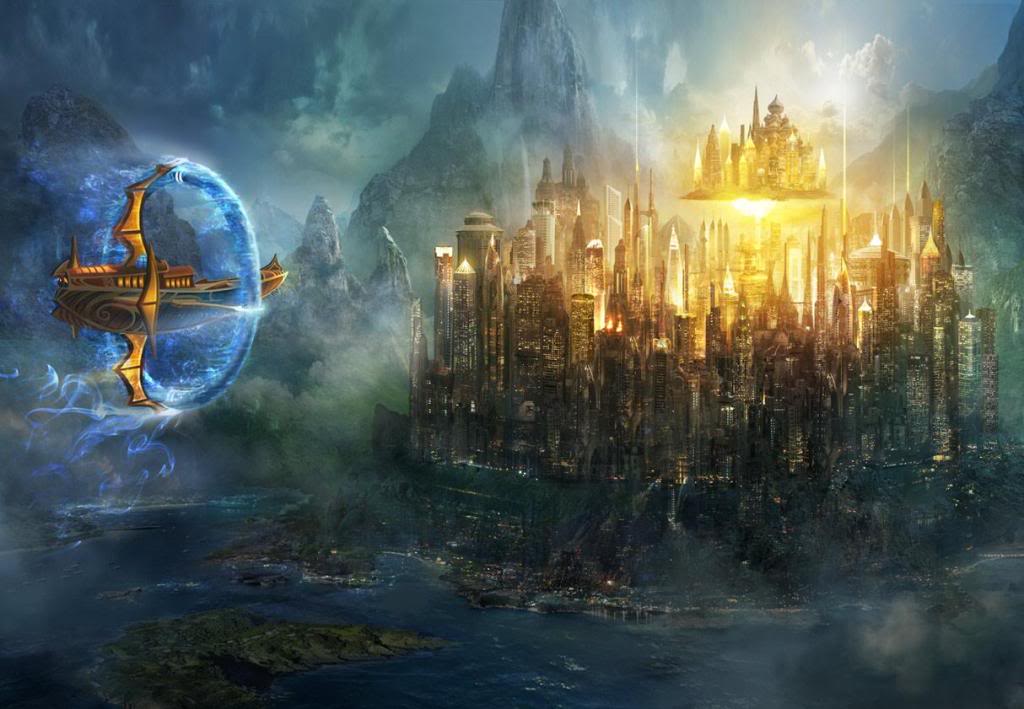
Fantasy noir 1920s New York! With some more oppressive gothic architecture than pictures.
Okay, so this one is actually in one of the Five Nations – Breland, to be precise. For a few reasons I’m about to go over, though, it belongs in this section rather than the previous one.
Sharn is a shining metropolis – the biggest city in Khorvaire, certainly, although it’s rumoured that it might not be the biggest in Eberron. When I call it “fantasy noir 1920s NYC,” I am basically being accurate. Its nicknames include “the City of Towers” (self-evident) but also “the City of Knives” (because you’re going to get shivved) or “the City of Lost Souls.”
It’s a hub of commerce and decadence located in the South-West of Breland, and during the War continued to be used as neutral grounds for trading and diplomacy. It was originally founded by a pirate as his retirement home, far ahead of the Brelish colonisation wave, until Breland eventually caught up with them and ended up joining Sharn to their kingdom (this was far before Galifar I united the five kingdoms).
Geographically, the city is sharply subdivided into districts, mostly based on wealth - the ultra-rich literally live above the city on a floating island of skyscraper-castles, whereas the poor live on the ground level, in the shadows of both the "regular" skyscrapers and the floating ones. The very poorest live below-ground, in shantytowns and ghettos not far from the industrial heart of the city (the Cog, which uses the thermal energies of the volcano the city is build on to power its factories).
Other than the fact that it’s fantasy noir 1920s NYC, Sharn has a few things going for it:
First, it is the biggest and most cosmopolitan city in all of Khorvaire, and where the who’s-who of pretty much everything lives. Its higher education faculties are internationally renowned, it’s a place where you can find pretty much anything you could want (for a price) and it’s practically an independent city-state (it just pays tribute to the Brelish crown).
As a by-product of this, other than the highest rate of muggings per minute per square mile in the known world, Sharn is also pretty much an espionage battlefield – with every secret service under the sun trying to further their own goals. Think of Berlin in the Cold War and you’d be right.
As the most important city in Khorvaire, it is also one of the few places where you’ll find every Dragonmarked House has offices – in case international spies weren’t enough and you wanted to content with corporate spies too.
Its position also makes it the perfect launching point for expeditions to Xen’drik – a ruin-filled jungle continent that has recently been discovered to the South of Khorvaire and is a major plot-hook if your PCs are into dungeoneering.
Finally, partly because it has so much crime, Sharn basically has a modern-day police service with beat cops and forensics (the Sharn Watch), an anti-magical crimes department (the Blackened Book) and a counter-espionage unit (the Guardians of the Gate). All of them are underfunded and overworked, and any of these are willing to recruit “freelancers” to help with tough cases. Yes, you can specifically be a private eye adventurer in fantasy 1920s noir NYC; that’s the point. It even has a muckracking/tabloid rag called “the Inquisitive” that you can work as a journalist for.
Darguun
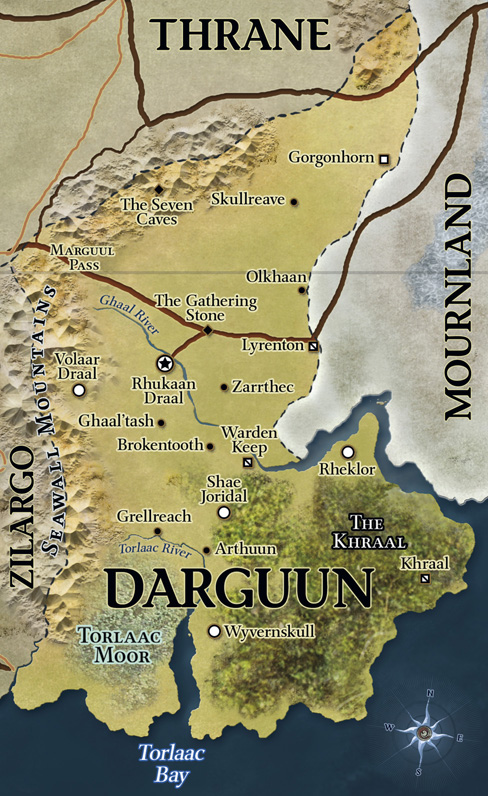
The country to the North is Breland, not Thrane – WotC’s mapmakers made a mistake.
Okay, so remember that subverting thing I mentioned in the last post? This is another one of those.
In Eberron, before the humans and other races came to Khorvaire, the continent was ruined by the mighty goblinoid Dhakanii Empire. For a time, the Empire was the most advanced nation in the world and it seemed like nothing could stop its ascendance, until a terrible catastrophe happened – the Far Realms became coterminous with the material plane, and the daelkyr of Xoriat (the Plane of Madness) attempted to invade Eberron with their armies of aberrations, and convert it into an extension of their home plane.
The goblins fought valiantly, and it’s through their sacrifice – and the sacrifice of the orcs – that the prime material was never annexed into the Far Realms and that live is even possible. This is part of why Eberron goblins and orcs aren’t viewed as outright monsters.
Darguun was a part of Cyre before the Last War. Due to Cyre being the least militarily powerful of the Five Nations, the Cyrans relied very much on mercenaries to fight for them in most cases. There are goblinoid tribes living all over the place in Khorvaire, and so they hired the Rhukaan Tash (Razorcrown) clan to fight for them in the War. About 30 years before the end of the War, these goblin mercenaries revolted against their employers, seized a part of Cyre and declared it to be the new homeland of the goblinoid nation.
Although Darguun practices slavery (like the Empire before it) and is mostly made up of belligerent goblin mercenary clans, it is ruled by the Lawful Neutral warlord Haruuc Shaarat'kor, who desires only peace with his neighbours and wishes a return to civilisation for his people. Eventually, he hopes the goblins can once again reach the heights they were at during the Dhakanii Empire.
The Demon Wastes
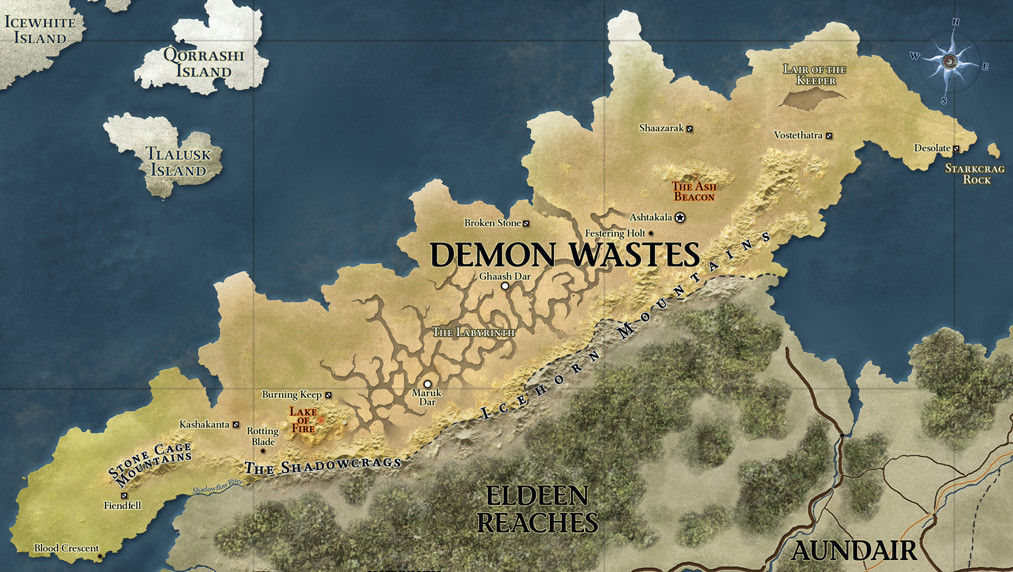
Don’t go here.
A desolate wasteland populated only by barbarian tribes who worship the last remains of the primordial demon-lords who attempted to destroy all creation, the Demon Wastes pretty much exist only so someone can go crusade against evil-worshipping barbarians.
Droaam
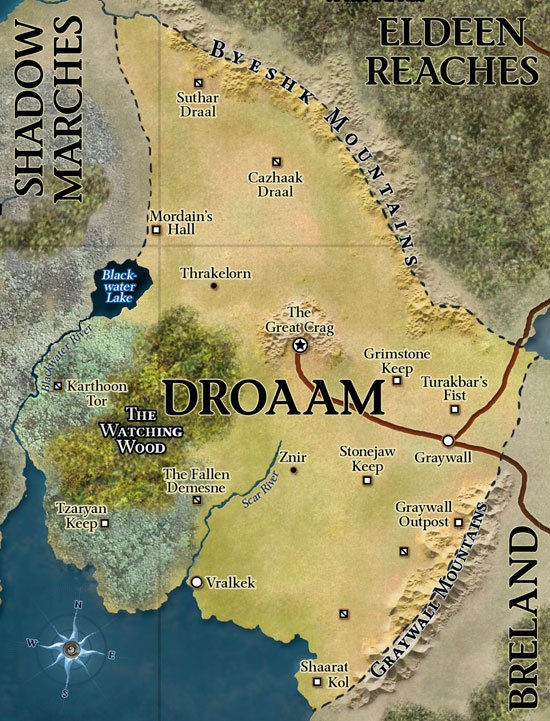
Wonder Boy in Monster Land.
Droaam is the kingdom of free monsters – although don’t let them hear you call them that.
Once part of Breland, the region was seized by the Daughters of Sora Kell – a group of very powerful hags – and a small army of ogres about ten years ago. With the brute strength of the ogres and the magical might of the hags, the Daughters have managed to turn Droaam into a cohesive nation – mostly.
Things out here are even more frontier spirit, and it’s very much like a bad parody of anarchism (as in, it isn’t anarchism at all – it’s classic feudalism). There’s no centralised law and the rule of the strong prevails. Pretty much the only thing you can’t do (if you value your life) is piss off the Daughters, as they will quite happily sic their ogre army and their own spells on any trouble-makers. Fortunately for everyone, the Daughters aren’t fond of creatures that go around murdering their subjects for no reason; and beyond that, some of the more intelligent monsters are trying their best to create a system of laws from scratch, in a country essentially ruled by warlords with complete power of life and death over their subjects.
In Khorvaire, Droaam is often portrayed as a nefarious danger lurking on the borders of civilisation, especially in Breland (who, as previously mentioned, are upset about the whole loss of land thing). In truth, the Daughters of Sora Kell only want to create a place where the more “monstrous” races can be free to live in peace and without fear of being hunted by others. They’ve tried to make diplomatic overtures to the other nations, but the country is young, detested by the Five Nations out of prejudice and doesn’t have any financial or political muscle.
That makes Droaam a perfect basis for a campaign where the PCs travel to the other minor kingdoms in Khorvaire to make allies, if you’re into Cold War Non-Aligned politics.
Also everywhere else (on Khorvaire)!
Original SA post
Eberron, part 2B: everywhere else (on Khorvaire)!
The Eldeen Reaches
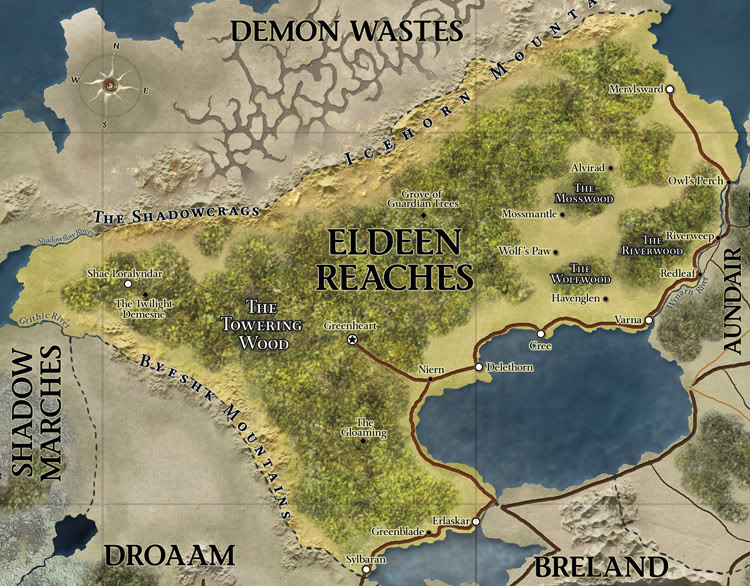
A nation of tree-worshipping orc druids. What, did you think the orcs would be barbarians?
Once a part of Aundair (representing a little over 50% of the territory it laid claim to, actually), the Eldeen Reaches seceded during the Last War (roughly 40 years ago).
The Reaches are one of two places in Khorvaire where the druidic orcs still survive after most of their race died out during the same invasion of Far Realm creatures that ended the Dhakanii Empire. Sparsely populated by non-orcs due to their wooded nature, the Reaches were abandoned by Aundair’s troops during the Last War and left to fend for themselves against bandits and Brelish raiders.
With no help coming from the Crown, the inhabitants of the Reaches turned to the Wardens of the Wood – orcs, druids and aberration-hunters who lived in the Towering Wood – and their leader, the Great Druid Oalian (a sapient tree, yep), for protection.
Contrary to the other secessionist "monster" nations (Droaam and Darguun), the Reaches were recognised as an independent nation in the Treaty of Thronehold and so are actually a legitimate sovereign entity. This doesn’t stop Aundair from plotting to “take them back,” though.
The Lhazaar Principalities
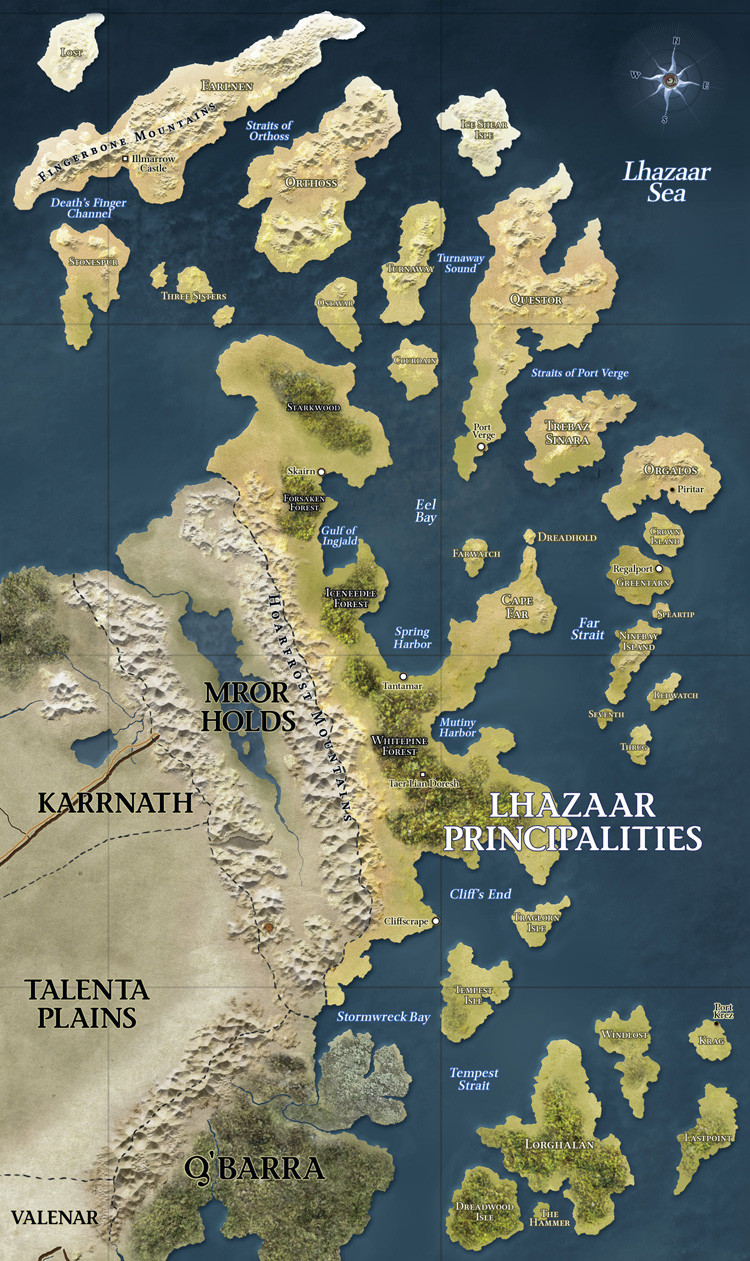
Totally not fantasy pre-unification Italy.
It’s fantasy pre-unification Italy. With pirates.
The Lhazaar principalities are a mess of tiny fiefdoms and city-states that constantly vie against each other for influence and power. They’re not too fond of the land and are very heavy on the seafaring. They’ve never been subjugated by anyone as a result, although they did agree to being part of Galifar for a while – which turned them from outright piracy to trade and commerce for a little while (of course, they never gave up on the piracy entirely).
Interestingly, the Lhazaar principalities are named after Lhazaar, the woman who led human refugees and settlers to Khorvaire from the continent of Sarlona about three thousand years ago, and it is where the humans set out from to settle Khorvaire – going West over the Mror holds into Karrnath, then the rest of the Five Nations from there.
Go here if you want pre-unification Italian politics.
The Mror Holds
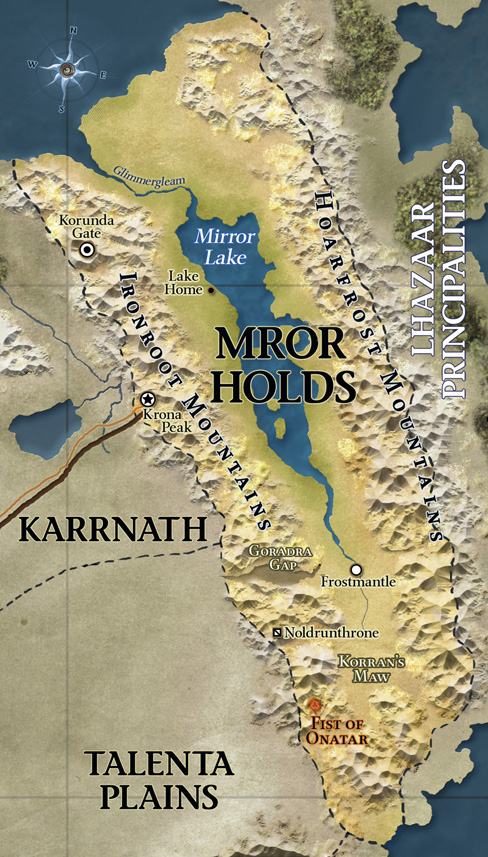
The name isn't actually a typo for “mirror,” honest.
The homeland of the dwarves, the Mror Holds are where the majority of them live in Khorvaire, split into twelve great clans. Really, it’s one of the more boring parts of the setting – the dwarves love gold (the House responsible for banking and safekeeping is dwarven, and its oldest holdings and most secure vaults are here), dug too deep and let some aberrations in from below, lost their mountain kingdoms for a while, then reclaimed them with the help of Galifar. They’ve always been an independent nation and they still are.
Basically, you go here if you want traditional dwarves.
Q’barra
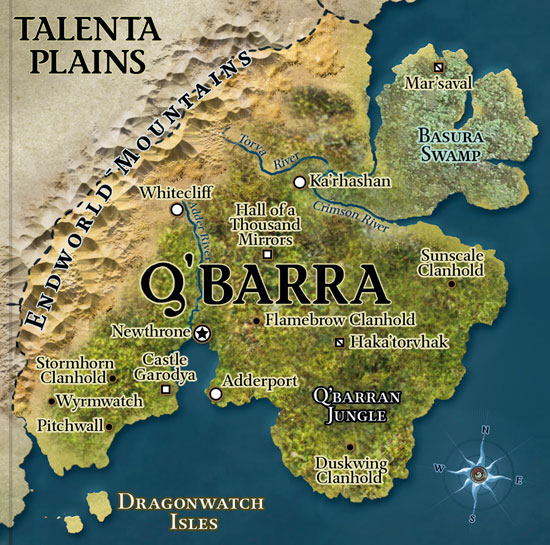
Discount Xen’drik.
Q’barra was a Cyran colony founded at the time the Last War broke out – it’s some ways to the East of the Five Nations, across the steppe-like Talenta plains, and it was founded by people who had lost faith in Galifar after it shattered at the beginning of the Last War. It’s entirely covered by heaving jungle and inhabited by lizardfolk who’ve been living there undisturbed for thousands of years.
The lizardfolk don’t actually mind the settlers too much – except for a few clashes, mostly triggered by the settlers, co-existence is essentially peaceful. The lizardfolk live deep in the jungle where the settlers don’t go, and bar a few aggressively isolationist tribes seem to relish the opportunity to trade.
The Shadow Marches
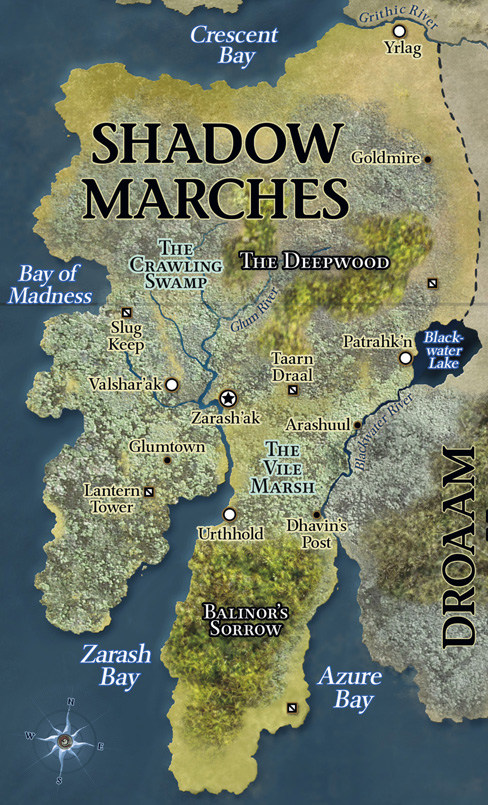
The other bit with orcs.
And that’s pretty much all the characterisation they get. The Shadow Marches are the swampy ass-end of Khorvaire, and the other part of the continent where the orcs still live. Both these regions were orcish nations that compete with goblinoid neighbours thousands of years ago.
Pretty much the only thing worth taking note of here is that it’s where the majority of the Gatekeepers – the orcish druidic sect responsible for ultimately saving the world from the daelkyr invaders from the Plane of Madness – still live.
The Talenta Plains
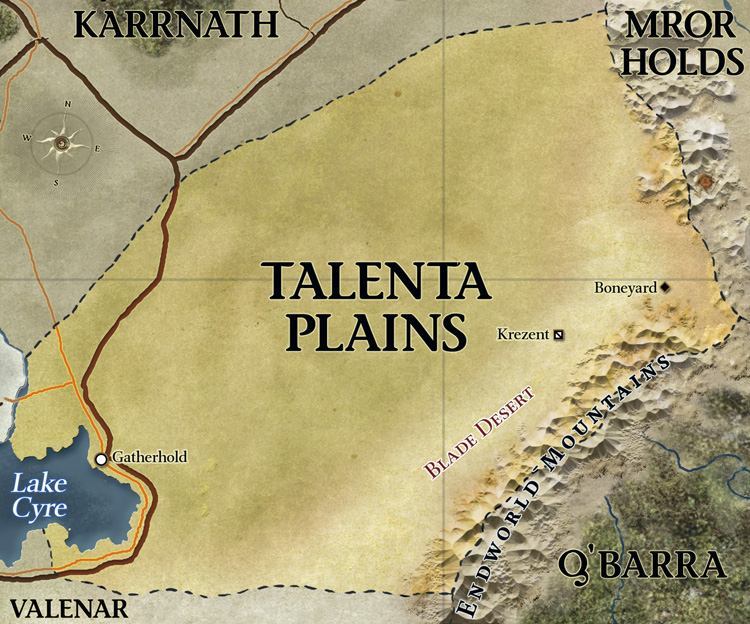
Far more exciting than you would believe based on this image.
Okay, so the Talenta plains are a gimmick region. It’s a very good gimmick, though:
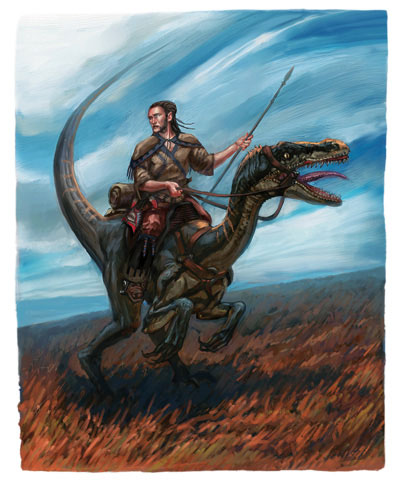
Halflings on motherfucking dinosaurs.
The plains are home to two things: first, a bunch of nomadic halfling tribes. We’re not talking knock-off hobbits, here; the reference is more to Native Americans. Secondly, the plains have roaming herds of buffalo-sized dinosaurs, which the halflings herd around and use for food, clothing, etc.
Under Galifar, both the neighbouring Cyre and Karrnath laid claims to the plains as territory for them to expand into, with treaties negotiated with the halflings allowing them to roam over their “ancestral lands.” Fortunately, the Last War caused both Cyre and Karrnath to attempt to forcefully conquer the plains, in turn prompting the halfling tribes to unite and push them back. As a result, the plains are now an autonomous region, per the Treaty of Thronehold.
Plains halflings ride velociraptors (“clawfoots”), oversized dilophosauruses (“fastieths”) and pterodactyls (“glidewings”). Dinosaurs are actually common everywhere in Eberron, but they’ve been mostly eradicated from Khorvaire save for the Talenta Plains and Q’barra.
The halflings aren’t just plains nomads, though – two of the twelve Houses are run by halflings, which gives them a very important presence in the Five Nations.
Valenar
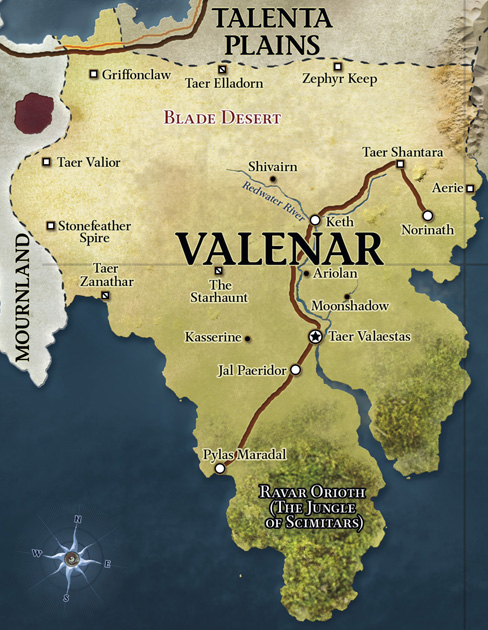
Land of the immigrant Tuareg elves.
Another breakaway nation, Valenar was formed by the mercenary Valaes Tairn elves who revolted against their Cyran employers (at this point, it should be clear that employing mercenaries in Eberron is generally a bad idea).
Valenar is a fairly dry place save for its very South, even going so far as to have the only desert on Khorvaire. The Valaes Tairn are actually not from the continent – even though Valenar was originally an elven colony, the elves abandoned it several millennia back after they got in a war with the Dhakanii Empire. Instead the Valaes Tairn are from the continent of Aerenal to the South, came over as mercenaries looking for employ, and used the Last War as an opportunity to reclaim the once-colony.
More on Aerenal in a later post.
Zilargo
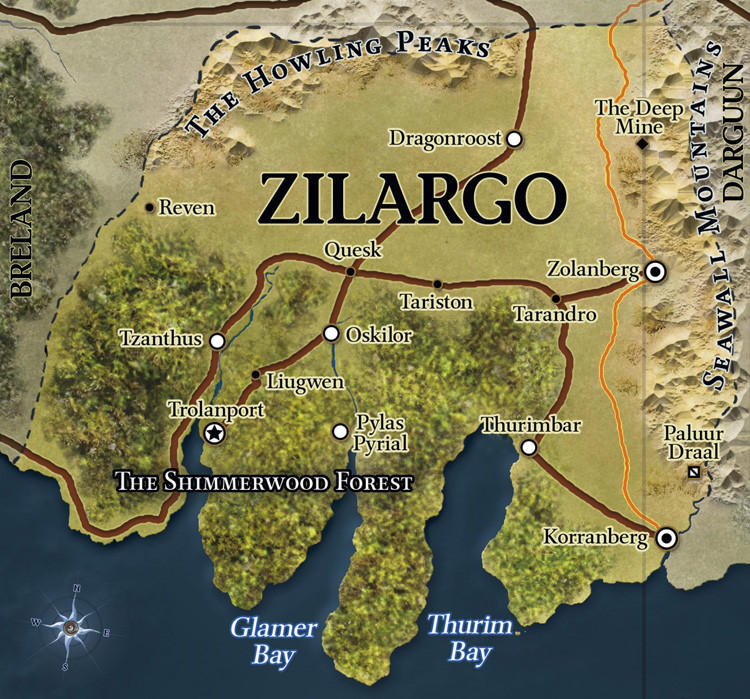
The one really uncomfortable part of the setting.
Stop me if you’ve heard this before:
Zilargo is a nation of secretive power-brokers who use their influence to ensure they nearly always get what they want, whose spies are rumoured to be everywhere and possibly even nefariously guiding events in other countries, and who control the media. They are physically weak, but their mastery of other people’s secrets have allowed them to thrive. Oh, also, Zilargo is a utopia because their secret police “disappears” and “reforms” any dissidents.
Apart from that last part, that is pretty eerily redolent of the kind of stuff you’d find in the Protocols of the Elders of Zion. Admittedly, the banks and financial institutions have been handed over to the dwarves, but I still find Zilargo a really uncomfortable part of Eberron. Don't get me wrong: Baker isn't in any way racist, but this is still creepy and weird.
That first paragraph is essentially the extent of their characterisation – they’re a nation of gnomes ruled by a Triumvirate, whose secret police are called “the Trust;” they thrive as information brokers and their primary instruments for influencing foreign policy are blackmail and intrigue; and they run the biggest newspaper in the Five Nations, the Korranberg Chronicle, which is edited and printed in the city of Korranberg, which contains what is possible Khorvaire’s biggest library. Whereas the Sharn Inquisitive is little more than a sensationalist gossip rag, the Chronicle is a respected news publication whose reporters write about current affairs, politics and economics.
Next time: “an ingenious device for obtaining individual profit without individual responsibility.”
The Dragonmarked Houses
Original SA post
Eberron, part 3: the Dragonmarked Houses
About three thousand years ago, humans settled the continent of Khorvaire, having left from Sarlona, the cradle of human civilisation in Eberron. No one’s really sure why, but it was a few generations after that that the first dragonmarks appeared.
There are theories – some believe that dragonmarks are at least partly linked to exposure to dragonshards (essentially crystallised magical energy which are required for crafting certain things) – and that the marks only appeared on Khorvaire because Sarlona is exceptionally poor in dragonshards. It’s certainly true that exposure to a dragonshard will bolster the powers of a dragonmark, but beyond that, you don’t need to be exposed to shards to manifest a mark – they’re essentially genetic traits and will appear in a small number of individuals in any given generation of a marked family.
Either way, the dragonmarks give their bearers the ability to cast certain spells as innate abilities. Each dragonmark can only cast a handful of spells, and they’re all related to a specific commerce or economic activity. It’s thanks to these that the various dragonmarked families were able to establish themselves as merchant families first, then flourish until they became the Dragonmarked Houses of today.
There are 12 marks, and each mark is associated with one specific House (with one exception: there are two Houses with the Mark of Shadow due to a schism a few decades back) and one specific species – the marks do not manifest outside of their chosen race. Within Khorvaire, the Houses enjoy legally-enforced monopolies (as rewards for their part in uniting the Five Nations into the kingdom of Galifar) – it is in effect not possible to operate a business in any of the Five Nations or any of the “civilised” other countries without paying tribute to a House. The Houses control essentially all economic activity, and it is in their vested interest to make sure that no one is allowed to operate outside of their rules.
Those who try anyway tend to find that their goods are stolen, their services slandered, their equipment broken and their shops “accidentally” burnt to the ground while suppliers refuse to sell them product and credit lines dry up – those who still don’t get the message sometimes suffer injuries or worse, although nothing can ever be pinned on anyone, of course.
As a “carrot” to go with that stick, the Houses’ seal of approval guarantees a certain quality of service to any prospective patrons, who can then purchase from a business without worrying about what they’re getting for their money. The Houses also maintain trade schools that provide training in their specific trades – a guarantee of employment in most businesses. Additionally, belonging to a House means that the House will look out for your business interests and make sure there are as few things as possible to get inbetween you and your business’ money. In that same vein, belonging to a House means getting access to all the other members’ services.
In exchange for this monopoly, the Houses have a few restrictions applied to them: first, they’re neutral – even though they might own territory in so-or-so city or have senior members who grew up in so-or-so country, the Houses are obligated to not take sides and to provide their services equally to anyone who can pay (as long as they haven’t been blacklisted on an individual level). Secondly, members of each dragonmarked family (not all families that belong to a House are dragonmarked, of course) have to adopt a specific surname and cannot marry with other dragonmarked houses – doing so risks producing a non-standard, “aberrant” mark, which would be bad for business.
That’s pretty much it, though. Thanks to some canny political manoeuvring over the last few centuries, the Houses are beholden to no one; their possessions and territories are considered sovereign and they have the right to maintain armies to protect them.
Pretty much all of the Houses are structured as follows: first, you have the patriarch/matriarch who is in overall command of the House. Below them, there is a council made up of one representative from each nation where the House operates – the lord seneschals. Each lord seneschal manages several viceroys, each of whom is responsible for a specific region and commands the allegiance of local guildmasters.
House Cannith
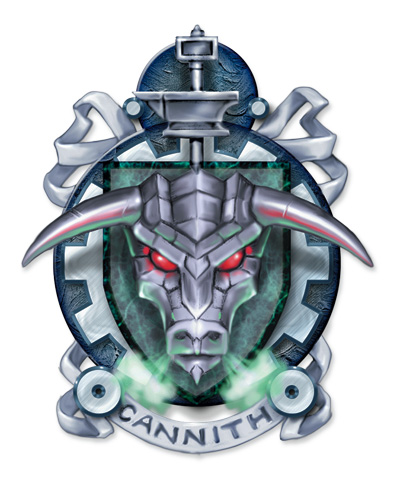
Race : Human
Mark of Making (allows for magically repairing or creating items)
Based out of Cyre until the Day of Mourning, House Cannith is the artificers’ and engineers’ House. They make and maintain most of the magical artefacts that modern-day civilisation requires to operate (from street lighting to weaponised wands), and they’ve essentially invented mass-production of goods. With Cyre destroyed, the House is now split in three parts, each ruled by a different person, each of them vying to gain control of the entire House.
House Cannith is best known for its Creation Forges – immensely powerful complexes that allowed Cannith artificers to bend tremendous power to the creation of magical items. It is thanks to the Creation Forges that House Cannith was able to create the warforged during the Last War – sapient construct soldiers who were made in vast numbers and many shapes when manpower became an issue towards the end of the War.
Essentially, think of the Creation Forges as the magical equivalent of a sci-fi replicator – capable of making essentially anything from raw materials and ambient magical energy. Per the Treaty of Thronehold, the Forges have officially been shut down and dismantled, but that doesn’t prevent the various Cannith factions from doing their best to lobby for the re-activation of the Forges – it’s even rumoured that they still operate one or two of them in secret.
House Deneith
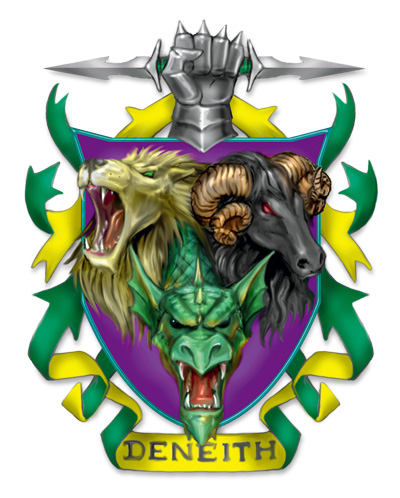
Race : Human
Mark of Sentinel (provides protection to others)
House Deneith provide two kinds of services: bodyguards and mercenaries – and that’s it. Not that that is an obstacle to anything, of course – House Deneith has the largest military force of any of the Houses, and I’m not just talking about the troops it rents out as part of its business.
On its own, House Deneith is probably enough to challenge any one of the Five Nations militarily. Unfortunately, with business waning now that the war is over and with the Five Nations being much weakened by the conflict, there are those within its ranks who believe House Deneith should do just that – flex its muscles and carve out its own kingdom.
House Deneith also operates the Sentinels – the only transnational police force recognised by the Treaty of Thronehold, authorised to serve warrants across the borders of all signatory nations (so yes, you can be fantasy bounty hunters/FBI agents).
House Ghallanda
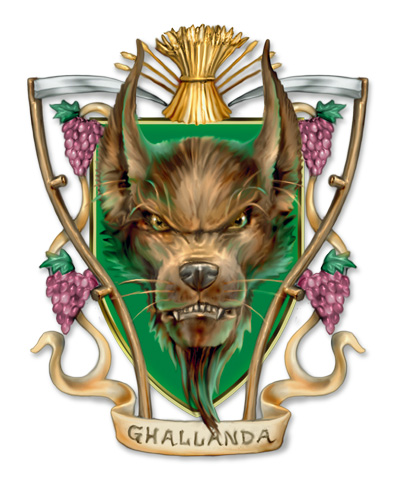
Race : Halfling
Mark of Hospitality (create food, water and shelter)
House Ghallanda is one of the two halfling Houses, both based out of the Talenta plains. Their business is hospitality – inns, taverns, restaurants (and other less savoury entertainment businesses, if you catch my drift); wherever there’s money to be made out of catering to patrons, House Ghallanda is there to offer its services.
The main interesting thing House Ghallanda has going for it is that it represents a bridge between two worlds for the halflings: on the one hand, its traditions are very firmly rooted in the nomadic culture of the Talenta halflings; on the other, it is the main face of urban, “civilised” halflings as most of Khorvaire knows them.
House Jorasco
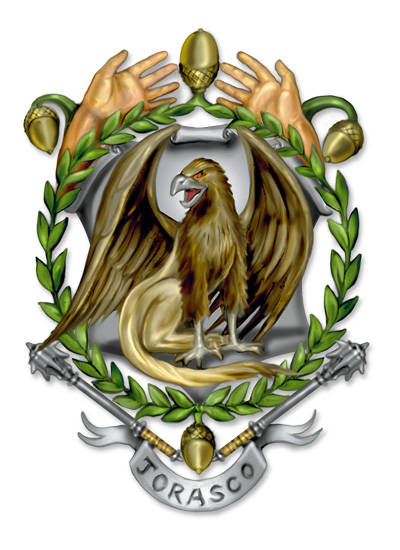
Race : Halfling
Mark of Healing (healing wounds and diseases)
House Jorasco is the other halfling House. Unlike House Ghallanda, the Jorasco halfling have abandoned their traditional, nomadic ways entirely – to the point where the House is headquartered in Karrnath. This is the source of some tension between the two Houses.
House Jorasco operates practically every hospital, clinic, sanatorium and dispensary in civilised Khorvaire, in one way or another – thanks to the Last War, their business has done very well. They will provide their services to anyone who can pay for them – and if you can’t pay, well, tough.
House Kundarak
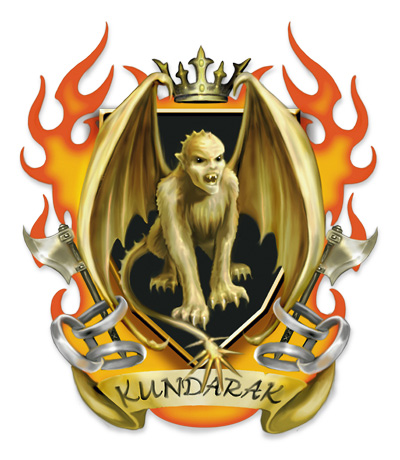
Race : Dwarf
Mark of Warding (alarms and traps)
Based out of the Mror Holds, House Kundarak operates every bank, vault and financial institution in Khorvaire. It is its financial might that provides backing for Khorvaire’s shared currency – combined, these factors mean that there is perhaps no House that has more influence than House Kundarak. In addition to this, the House also operates Khorvaire’s prisons.
House Lyrandar
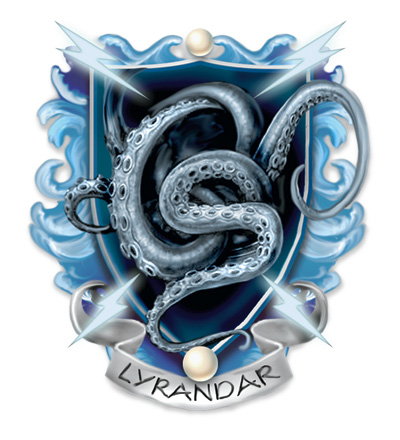
Race : Half-Elf
Mark of Storm (weather manipulation)
Based out of Aundair though originating in Thrane, House Lyrandar provides weather-manipulation (usually in the form of summoning rain to counter droughts or negating the effects of rain- or snow-storms) and transportation services. As an equally-important but less-renowned aspect of the former, they are also Khorvaire’s foremost experts on irrigation, dam/reservoir construction and flood prevention, and are responsible for implementing and maintaining these systems throughout the civilised nations.
Much more interesting for the PCs and much more visible in the public eye is Lyrandar’s exclusive control over bound-elemental-powered airships and galleons. Unlike the Lightning Rail (which is operated by House Orien and maintained by House Cannith), Lyrandar’s elemental-powered ships can go anywhere – for a fee.
Airships are made of lighter-than-air wood and powered by an enslaved elemental that provides propulsion – travel is fast, convenient and bypasses almost every possible danger, especially as airship captains are almost always marked members of the House who are therefore able to make sure weather patterns can’t damage their ships. Elemental galleons don’t fly, but use bound elementals to transport cargo or passengers over water at much greater speeds than a conventional ship would reach. Combined, these mean Lyrandar vessels are responsible for transporting the majority of cargo in Khorvaire.
House Medani
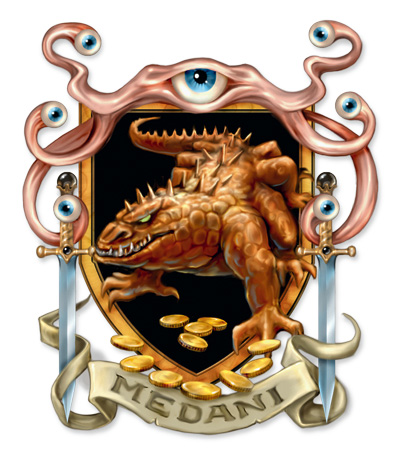
Race : Half-Elf
Mark of Detection (sense-enhancement)
Based out of the Brelish capital of Wroat, the half-elves of House Medani are Khorvaire’s premiere counter-espionage and anti-assassination experts. Whereas House Deneith bodyguards specialise in physical protection, House Medani’s skills lie in detecting attacks before they have a chance to actually happen and preventing them. Although secretive and not well-known outside of official circles, House Medani’s services are always in high demand – especially in these troubled times.
House Orien
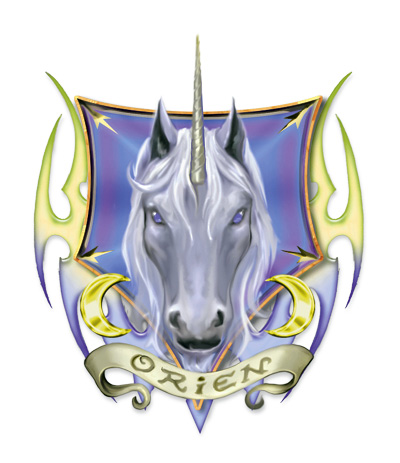
Race : Human
Mark of Passage (translocation and mobility enhancement)
If House Lyrandar controls the seas and the skies, House Orien controls transportation over land – whether goods or people. They own and operate Khorvaire’s postal services as well as all major roads and caravan routes. House Orien also operates the Lightning Rail (pretty much a magical maglev train), which stops at every major town or city in the Five Nations and is therefore used to move cargo as well as transporting passengers in extreme comfort and style – think of the Orient Express and you’re not far off (of course, a highly-secure luxury train transporting a bunch of rich people is just begging to be robbed at wandpoint…). Finally, House Orien are the only providers of teleportation services in Eberron.
Just a reminder: operating a postal service in a world with bandits and roving bands of monsters isn’t quite the same thing as signing up to work part time for the Royal Mail. As a lucrative little side-business, House Orien has élite troops who specialise in secure, high-risk deliveries. I like to pretend they’re called the “Special Delivery Service.”
House Phiarlan and House Thuranni
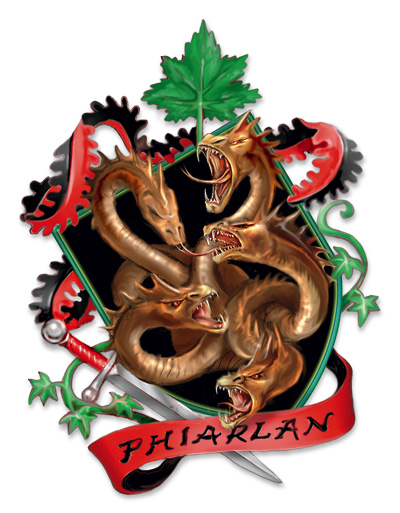
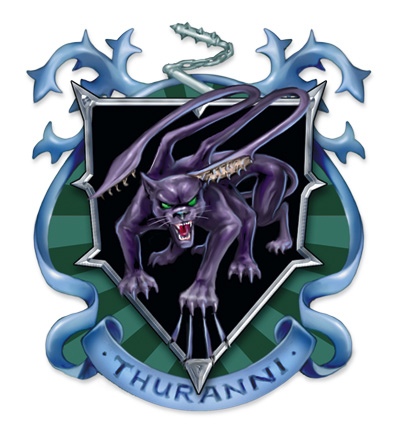
Race : Elf
Mark of Shadow (concealment, divination and illusions)
Publicly, the elves of Houses Phiarlan and Thuranni are known as the finest providers of entertainment and art in the land, and they have control over all forms of public and private entertainment in Khorvaire. In actual fact, this business is little more than a façade of legitimacy: the real money lies in their very extensive networks of spies-for-hire.
House Phiarlan is the original House – during the Last War, the tensions of working for every side eventually lead a small faction to split off and create its own House. While Phiarlan is neutral and content to work for the highest bidder, Thuranni refuses to do so and aggressively pursues its own agenda. Additionally, House Thuranni is willing to take on assassination contracts as well as simple spying – something which House Phiarlan refuses to dabble in.
House Sivis
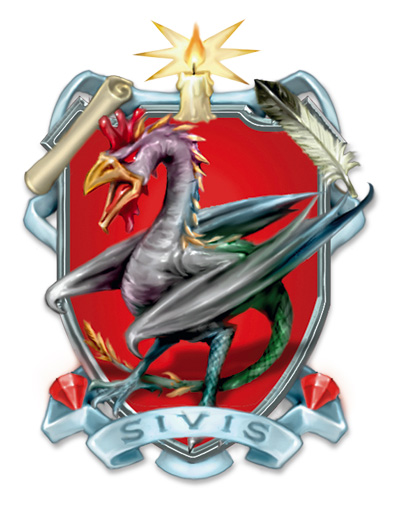
Race : Gnome
Mark of Scribing (communication over distance)
Thanks to the powers of the Mark of Scribing, House Sivis is responsible for providing instant, magical communication across all of Khorvaire. In addition to this, House Sivis runs all notaries, advocates, accountants, translators, bookkeepers and other such bureaucratic businesses. While publicly, House Sivis appears to have no desire other than to promote its services, its gnomish members are constantly jockeying for positions of power within the House, and rumour has it that the Trust sometimes uses it as a recruiting ground.
House Tharashk
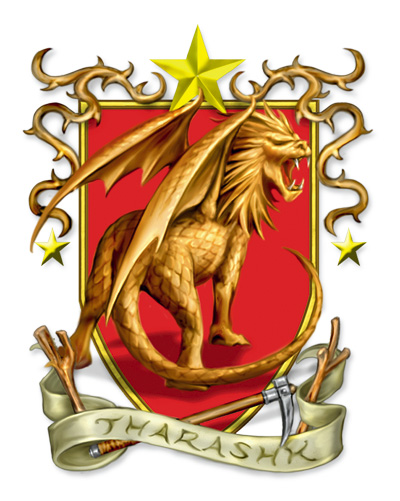
Race : Human and Half-Orc
Mark of Finding (locate items and persons)
The youngest of the Houses (only five hundred years old, versus several thousand for all the others), House Tharashk originated in the Shadow Marches and is quite likely the only occurrence of a dragonmark “jumping” from race to race – for example, while Lyrandar’s Mark of Storm only occurs in elves, the Mark of Finding occurs in both humans and half-orcs (but not orcs, suggesting it was a human mark originally and was passed on to half-orc offspring).
The Mark of Finding lets House Tharashk scions be very good at finding things. This has lead the House into two separate but related businesses: first, the House controls most of Khorvaire’s bounty hunters. Secondly – and more importantly for the House – the Mark of Finding’s powers has allowed them to develop a complete monopoly over dragonshard prospecting, mining and trading, putting their wealth on par with the other Houses despite their relatively very young age, since dragonshards are an integral component in the manufacturing of magic items.
Additionally, as the “least civilised” of the Houses which counts as members half-orcs and orcs as well as humans, House Tharashk also acts as the intermediary between Khorvaire’s “civilised” nations and the “monstrous” nations of Droaam and Darguun when necessary.
House Vadalis
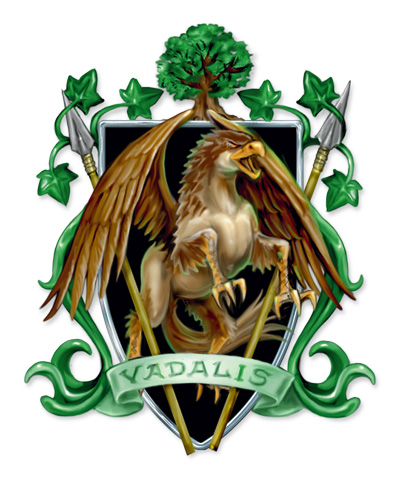
Race : Human
Mark of Handling (control animals)
Thanks to the Mark of Handling, House Vadalis has been able to set itself up as the primary provider of mounts, livestock and other domesticated animals. In addition to this, Vadalis businesses also provide care, training and stables for animals in urban environments.
More importantly, the Mark of Handling has allowed House Vadalis to breed magically-engineered (“magebred”) animals, both for war and labour. Magebred animals are tougher, stronger, faster and much more intelligent than their mundane counterparts, and for those who can afford them, provide a sizeable competitive edge over businesses who cannot pay for House Vadalis services.
The Mark of Death
It is a virtually unknown fact that there was a originally a thirteenth dragonmark: the Mark of Death, whose powers were rumoured to extend over death and undeath. An elven dynasty from the continent of Aerenal, the entire family was eradicated by a union of elves and dragons, who considered its powers an affront to all life.
What the Mark of Death can and cannot do is another of Eberron’s deliberate mysteries, much like the cause of the Mourning or the true nature of the Silver Flame.
Next time: everywhere everywhere else, for real this time
the world outside of Khorvaire
Original SA post
Let's clear our palates of the horrendous taste of 90s World of Darkness and enjoy some nice Eberron:

Eberron, part 4: the world outside of Khorvaire
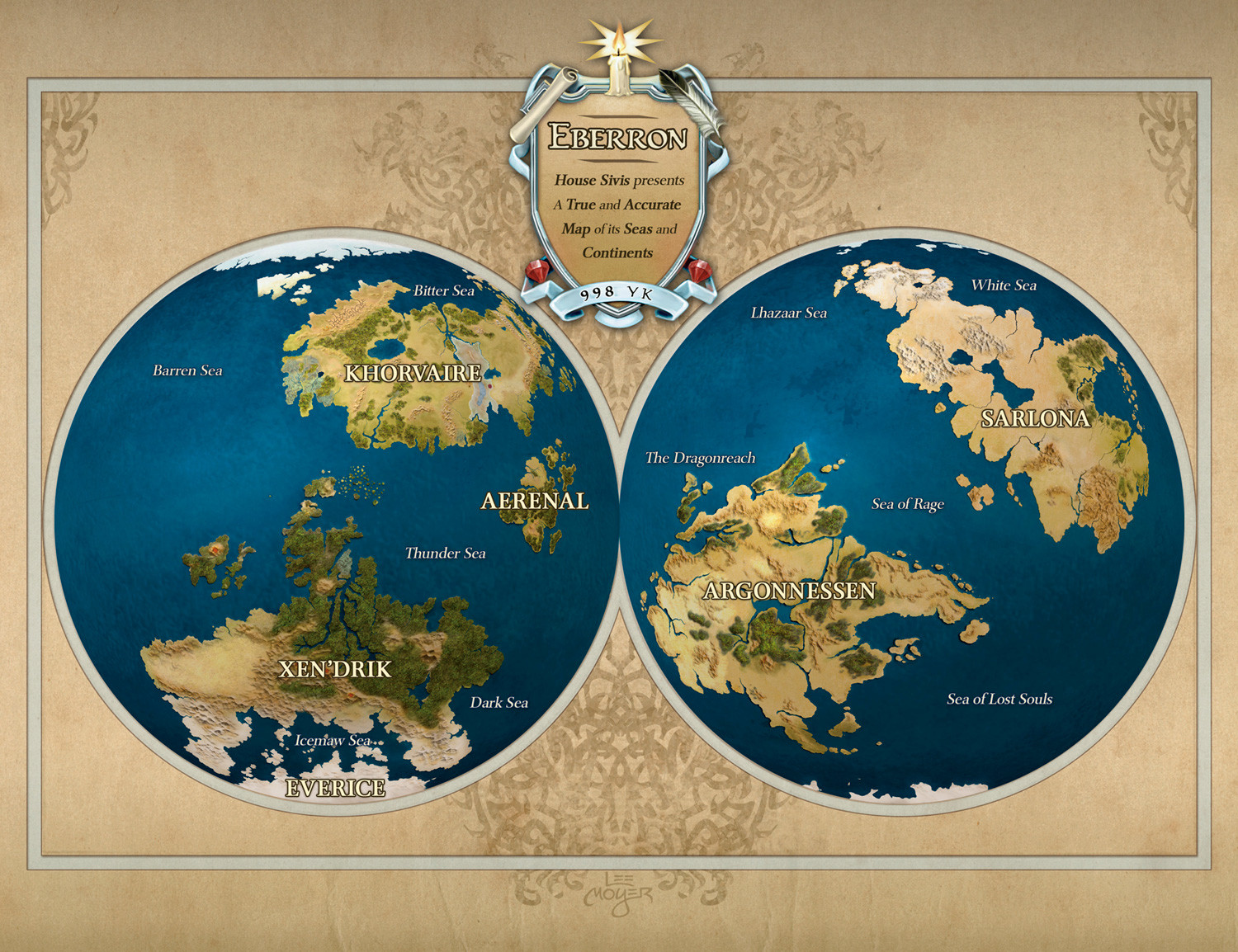
This is probably going to be a fairly short update as I’ll be covering these in very little depth – since these are mostly monoracial cultures, it's hard to go over them without dipping into the info I'll be giving in the races post.
Argonnessen
Here be dragons, and that is as much as anyone knows – Argonnessen is where the dragons retreated to contemplate the “draconic prophecy” tens of thousands of years ago, and they haven’t been seen since. The shores of Argonnessen are guarded by roving bands of barbarians who worship the dragons as gods and prevent anyone from heading inland to what they consider sacred places.
Sarlona
This is the continent where humankind was born. Nowadays, it is far more interesting for being where Riedra is.
Riedra is a human nation rules by the Inspired, a eugenically-bred caste of humans specifically designed as the perfect hosts for the quori (the nightmare crabs who inhabit Dal Quor). At the top of the Inspired ranks are those who are actually possessed by quori right this instant, with any non-occupied host as their servants. Below them are everyone else, and the Inspired rule with absolute control.
Riedra itself is an oppressive, totalitarian, feudal state where the populace are encouraged into submission via religion and genuinely believe that the “Path of Light” followed by their Inspired masters is the road to divine relevation. Most of the non-Inspired live in small, self-sufficient farming communities which exist to support the cities in which the Inspired caste reside. Riedra controls much of the continent of Sarlona, although there are a few pockets of resistance.
The catch is that the quori, as I mentioned before I started this series, are trying to conquer Eberron to prevent the changing dreams of its inhabitants from destroying them and remaking the Plane of Dreams in a different image – Riedra is the lynchpin of their efforts and they are doing their very best to spread their influence to the rest of the world.
Xen'drik
Roughly 40000 years ago, the giants were the pre-eminent civilisation in the whole of Eberron. They were unparalleled masters of the arcane arts and generally king of the heap, with a civilisation that boasted more technological marvels than modern-day Khorvaire has ever forgot. All that changed when the Plane of Dreams, Dal Quor, became coterminous with Eberron.
This allowed the aforementioned nightmare crabs to physically invade Eberron in an attempt to subjugate all life. Needless to say, the giants didn’t particularly approve of this and so fought back, culminating with a magical ritual so powerful it permanently moved Dal Quor out of orbit so it would never come close to Eberron again.
Unfortunately for them, the magical backlash from this ritual devastated Xen’drik and reduced their cities to rubble, and then to make things even better for them, the dragons (the other powerful empire of the day and self-appointed keepers of the cosmic prophecy that allegedly lists everything that will ever happen) decided to crush them into the ground for messing with the cosmology like that. Oh, and then the many thousands of elven slaves they kept as a menial class rebelled.
Nowadays, Xen’drik is a continent of dense jungles dotted with
massive
ruins, many of which contain lost treasures of the giant empire from before its fall, guarded by deadly traps and arcane constructs. A few giants still live there, reduced to scattered, savage tribes, fighting over the land among each other and with the new masters of the continent – the drow, who consider themselves the true heirs to the giants’ secrets and the real paragons of elvenness in Eberron (and are not FR/Greyhawk drow; more about that in the next post).
Though it’s only been rediscovered comparatively recently (in the last couple of centuries, with the Last War proving a bit of a distraction), there is a lot of interest in Xen’drik both because of the potential benefit of rediscovering giantish magic (it’s rumoured that the art of elemental binding came from Xen’drik originally, although no one is exactly clear on how since it’s been around for a while) and because as a former magical wasteland, there are a
lot
of dragonshards there for the picking.
From a game perspective, Xen’drik is pretty much there to let you mount expeditions to unknown jungles fraught with peril and hiding temples full of traps and treasure, so you too can play Fantasy Indiana Jones.
Aerenal
When the giants’ elven slaves rebelled against their one-time masters, the portion of them who didn’t stay to try to eke a living out in Xen’drik followed their leader Aeren to a new continent to the North-West of Xen’drik. They named it Aerenal in his honour, and became the Aereni (after escaping with a
lot
of magical knowledge from the giants).
There isn’t a huge amount that’s known about Aerenal itself, but there’s a bit about the Aereni. Aerenal has an exceptional affinity for necromantic energy, and as a result, death doesn’t seem to have much of a hold over there. The Aereni discovered rituals to make use of this early on, and much like Karrnath, they are a subversion of the “undead = always evil” trope that you normally have in D&D.
For the Aereni, if you die but your skills were of use to the nation, you get brought back as a “deathless” – who retain all of the memories, skills and personality they had while they were living, but have the advantage of being able to shrug off wounds, ignore diseases, not need sleep, etc. Aerenal itself is ruled by a parliament of the mightiest deathless called the Undying Court. The Undying Court is somewhat special in Eberron, in that they are one of the only factions who are into truly long-term (we’re talking thousands of years) planning, alongside the dragons. They’ve also managed to attain enough magical power that they are actually a deity able to grant miracles, which is pretty special in Eberron given that the gods do not have any contact with their followers (bar the Silver Flame), let alone physically manifest on Eberron.
Yes, you can make an Aereni elf cop who is a paladin of the Undying Court.
Next time: half-werewolves, half-doppelgangers and half-nightmare-crabs